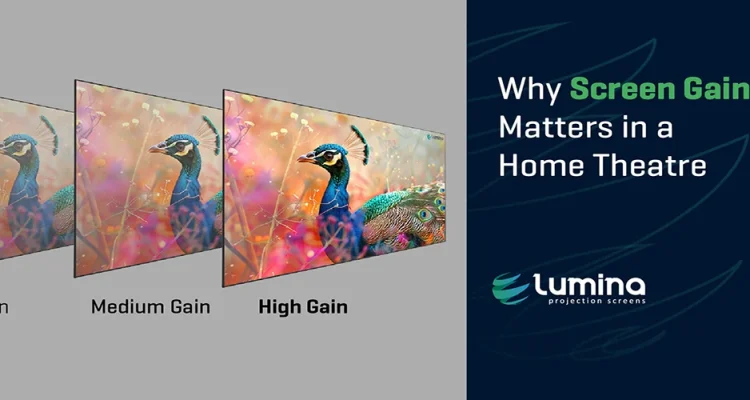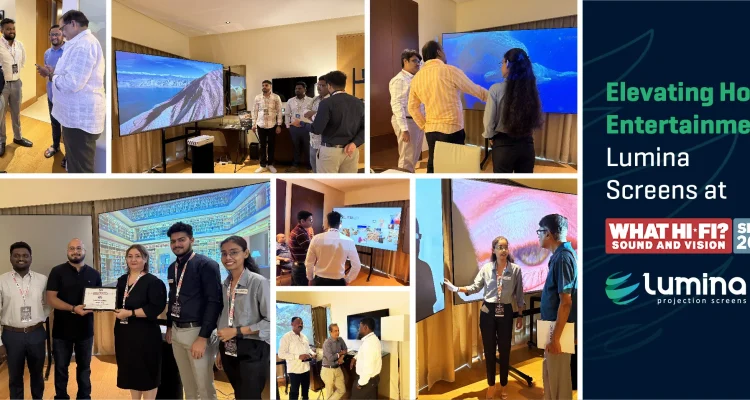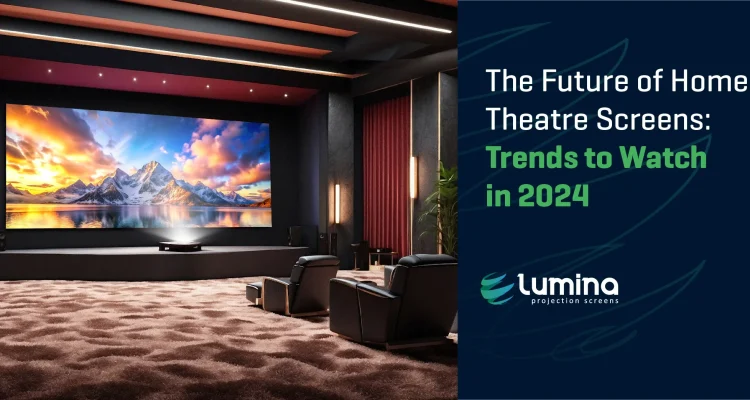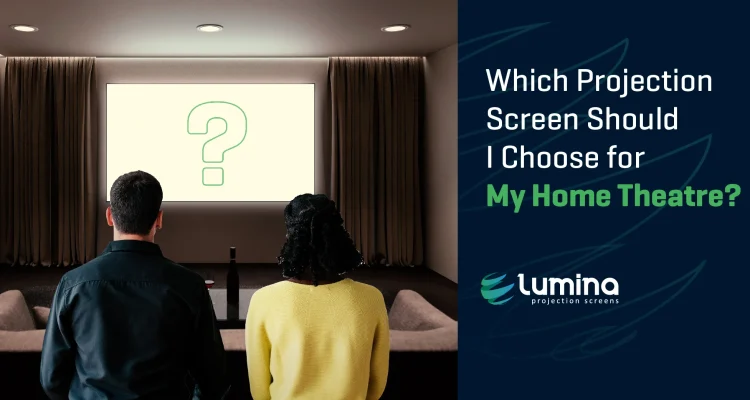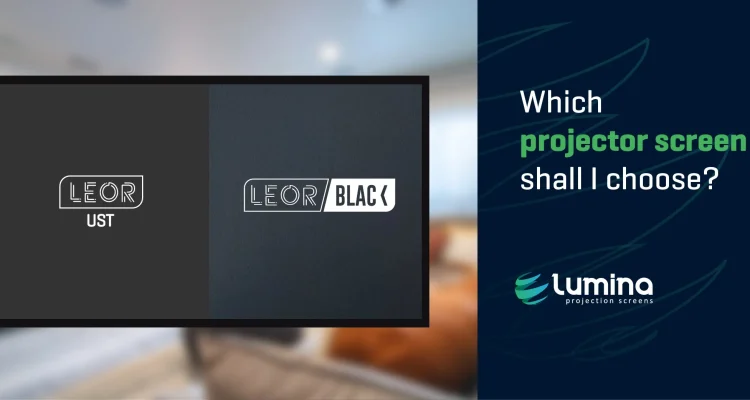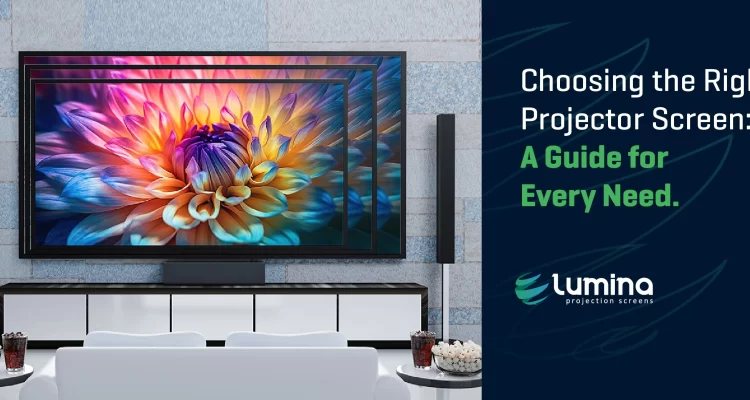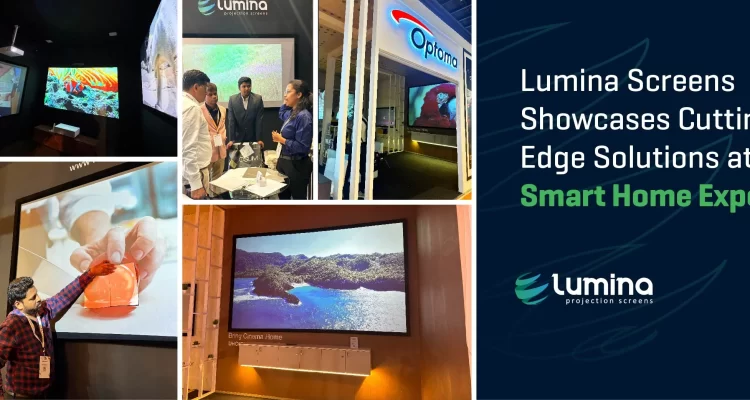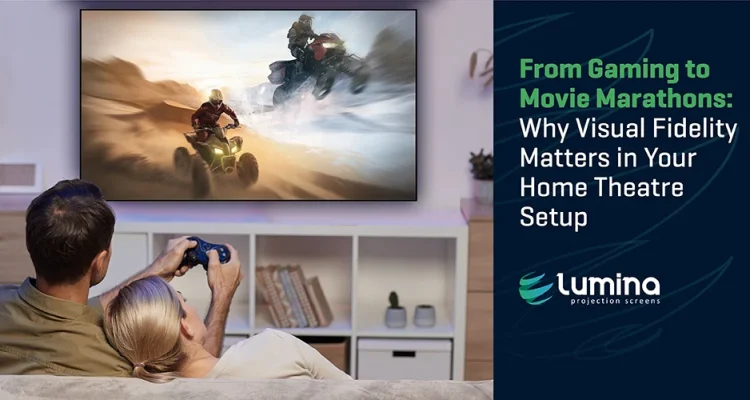
From Gaming to Movie Marathons: Why Visual Fidelity Matters in Your Home Theatre Setup
Creating an unforgettable home theatre setup goes beyond just sound systems and cozy seating it’s about visuals that make you feel inside the moment. Whether it’s the adrenaline of a gaming level, the suspense of a mystery thriller, or the energy of a live sports event, visual fidelity takes your experience from ordinary to extraordinary.
Imagine seeing every pixel of your favorite game, feeling every shadow’s depth in a blockbuster, or catching every bead of sweat on an athlete’s face. Lumina Screens ensures these moments come alive, making every viewing session a memory to cherish.
1. Gaming: Precision Meets Thrill
Imagine This:
You’re deep in a high-stakes level. Every movement matters. A pixel-perfect view lets you spot hidden traps or subtle cues in your environment. Fast refresh rates ensure your reflexes sync seamlessly with the visuals.
Why Visual Fidelity is Essential in Gaming:
- Sharpness and Clarity: High-resolution visuals bring every detail to life, from a glowing treasure chest to a lurking enemy.
- Smooth Gameplay: Fast refresh rates and minimal lag enhance reaction times, giving you the edge in competitive games.
Lumina Screens for Gamers:
Lumina Screens provide unmatched clarity and sharpness. Leor UST, with its advanced micro-coating and 16k resolution, offers a seamless gaming experience. No flickers, no distractions—just pure immersion.
2. Movie Marathons: Experience Stories Like Never Before
A quiet evening with loved ones, popcorn in hand, and the room darkened just enough. The screen comes alive with vibrant colors and rich contrasts, pulling you into every scene. A romantic sunset feels warm and vivid, while the chilling dark alleys of a thriller send shivers down your spine.
The Role of Visual Fidelity in Movies:
- True-to-Life Colors: The magic of cinema lies in its ability to replicate reality or create stunning new worlds.
- Contrast and Depth: Rich blacks and bright whites add dimension, making every frame cinematic.
Lumina’s Solution for Cinephiles:
Lumina’s ALR screens, like Leor Black, enhance color accuracy and contrast. Even in well-lit rooms, these screens block ambient light, ensuring the visuals stay vibrant. It’s like bringing the cinema right into your living room.
3. Sports Viewing: Feel the Stadium’s Roar
The final minutes of a nail-biting game. The ball zips across the field. You can see every detail—the players’ expressions, the grass blades bending under their feet, and even the fine print on their jerseys. It’s not just watching; it’s living the game.
Why Clarity and Brightness Matter for Sports Fans:
- Every Detail Counts: From the trajectory of a ball to subtle player movements, clarity makes the difference.
- Bright Rooms? No Problem: Whether it’s a daytime match or an evening viewing party, an ALR screen by Lumina Screens ensures you never miss a moment.
For sports enthusiasts, Leor 1.5 offers unmatched brightness and clarity. High-gain technology amplifies the projector’s light, making it perfect for lively, brightly lit rooms. Gather your friends and experience every match as if you were in the stadium.
Whether it’s gaming with friends, a family movie night, or a sports party with cousins, home theatre setups are about shared experiences. Lumina Screens enhance these moments, making them more vivid, emotional, and unforgettable.
Visual fidelity transforms viewing into an immersive adventure. Whether you’re battling foes, diving into a cinematic masterpiece, or cheering for your favourite team, Lumina Screens ensures that every experience is lifelike and breathtaking.
Explore the range of high-performance screens from Lumina and make every moment at home count. It’s not just a screen—it’s your window to a new reality.
FAQ’s
What is the ideal aspect ratio for a home theater projector screen?
A 16:9 aspect ratio is the standard for most modern movies and TV shows, ensuring compatibility with most projectors.
How to set up a projector screen for gaming?
Use a screen with low latency and a high refresh rate for gaming. Ensure it’s positioned at eye level for an immersive experience.
Why is visual fidelity important in a home theatre setup?
Visual fidelity ensures that images are displayed with high clarity and accuracy, enhancing the viewing experience during gaming or movie sessions.
How does screen quality affect movie and gaming experiences?
High-quality screens provide vibrant visuals and smooth performance, ensuring enjoyable and immersive experiences during gaming or movie sessions.
What are the key features of a good home theatre screen?
Look for high resolution, excellent color reproduction, appropriate size, and compatibility with your home theatre system.
Why is visual fidelity important for gaming?
Gamers rely on accurate visuals for fast reaction times, sharper images, and reduced motion blur, all of which enhance performance and enjoyment.
Can I use a home theater screen with any projector?
Most screens are compatible with standard projectors, but check for specific requirements like aspect ratio and resolution compatibility.
How to choose the right size projector screen for my room?
Measure the viewing distance and opt for a screen that is approximately 1/2 to 1/3 of the distance in width. Ensure the screen fits comfortably within your room’s layout.
What’s the difference between a fixed-frame and roll-down projector screen?
Fixed-frame screens offer a taut, wrinkle-free surface, ideal for permanent setups, while roll-down screens are versatile and space-saving for multi-use rooms.
How to reduce glare on a home theater screen?
Position the screen away from direct light sources, use curtains or blinds, and consider an ALR or grey screen to minimize reflections.
- Date - November 29, 2024
